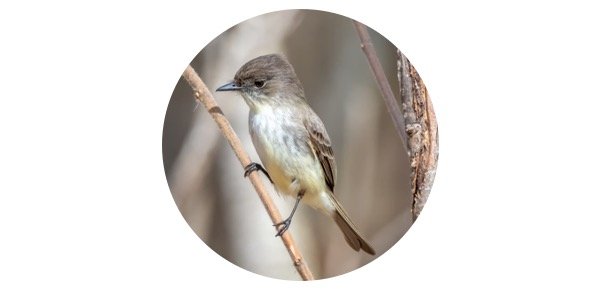Emperor Penguin: Description, Types, Pictures, & Fun Facts
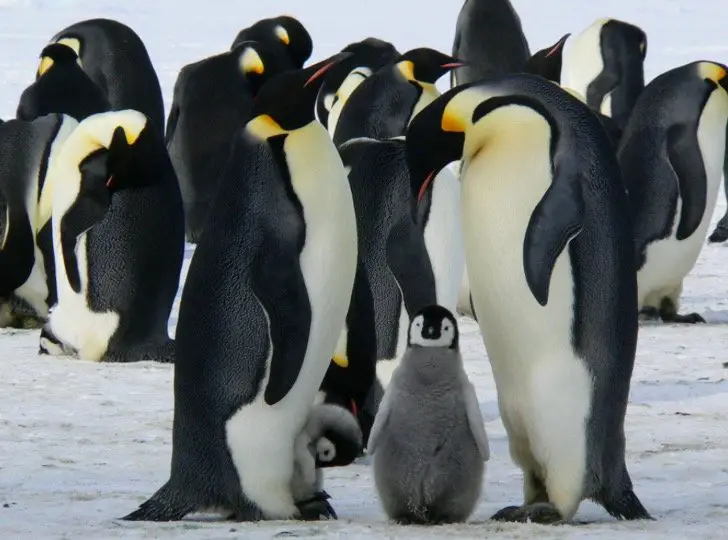
Table of Contents
Scientific Classification of Emperor Penguin
- Kingdom: Animalia
- Phylum: Chordata
- Class: Aves
- Order: Sphenisciformes
- Family: Spheniscidae
- Genus: Aptenodytes
- Scientific name: Aptenodytes forsteri
Location of Emperor Penguin
- Antarctica
- Ocean
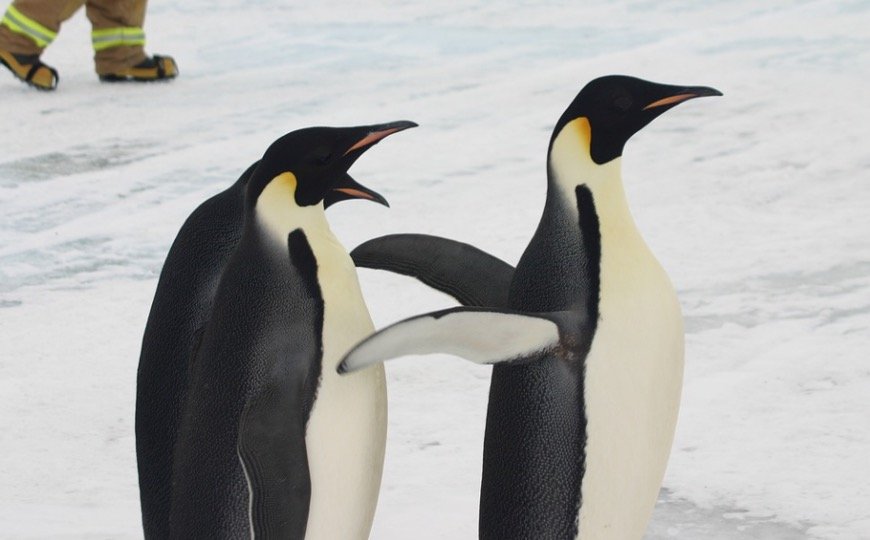
Emperor Penguin Description
The emperor penguin is considered as largest species of penguin in the world. The bird is widely distributed in the Antarctic continent and is also known as the most unique species of penguin. Unlike other species of penguin, which prefer to breed in the summer months.
The birds prefer the coldest months of the year for the incubation of their eggs. The birds cannot fly because their wings that are very short and stiff. However, their wings support them to fly over water instead of flying through the air.
However, the birds were first discovered by Caption Cook during the late 1700s when he was on his second voyage but still there the first colony was discovered during 1902. Because the birds have habitats in southernmost places thus as late as 1986, their colonies were still being discovered.
It is believed that the emperor penguins are the only species that could spend their whole life without walking on land because they prefer breeding on the ice.
Incredible Facts About Emperor Penguin!
The male and female penguins use different vocalizations to find their mating partners after arriving back at their breeding grounds. It is believed that the birds use sounds of different frequencies to locate each other easily.
The parents and chicks also apply the same strategy to reunite after a trip fishing. However, the growth rate of a penguin is high but still, they cannot accompany their parents into water. At that time they form a group with other chicks and keep themselves warm by living together.
The birds have to wait for the development of adult feathers to travel for long distances. The feathers help the birds in keeping themselves warm and waterproof.
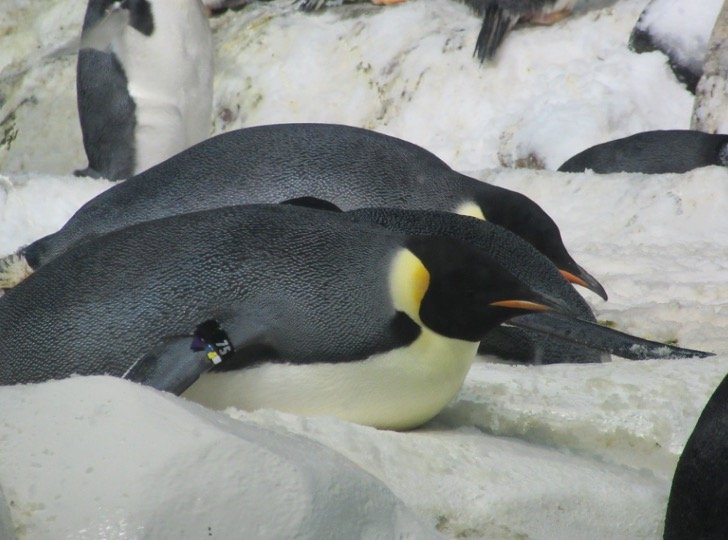
Appearance and Behavior of Emperor Penguin
The height of an emperor penguin is more than a meter, which makes it a large bird. The color of feathers varies from black to white and the neck of the bird consists of yellow patches. It is thought that the black and white coloration of penguins helps them in camouflaging from predators in the ocean.
The beak is black colored in which yellow ear-spots and orange-yellow strips run the length. As compared to their length, the beak of the penguin is relatively small in size that helps it retain heat.
The birds have webbed feet which are black and clawed and assist the bird in swimming. The claws also help them in walking on land. The feathers of the emperor penguin are tripled layered that protects the bird from hostile conditions such as a cold.
The three layers of feathers are dense, oily, and waterproof. The penguins are great swimmers that glid through water by propelling through their small, rigid wings.
Behavior and Lifestyle of Emperor Penguin
The Emperor Penguin is a social bird that prefers to live in groups or flocks, containing thousands of birds in a group. The birds generally form monogamous pairs that mean they remain loyal to their partner.
After returning to their breeding grounds, they call their partner with the help of vocalizations. The birds have great swimming skills and they can travel as fast as a dolphin and can leap out of the water. This is known as “porpoising” where the birds can breathe out without slowing their speed.
Emperor penguins also have great diving skills and they can dive to the depth of more than 500 meters. Their diving ability makes them the deepest diving birds worldwide. During diving in the depth of water, the bird can hold its breath for up to 20 minutes.
Generally, the emperor penguin travel at the speed of 5 to 10 kph but they can swim at the speed of around 24 kph. While foraging, they travel large distances for up to 1000 km.
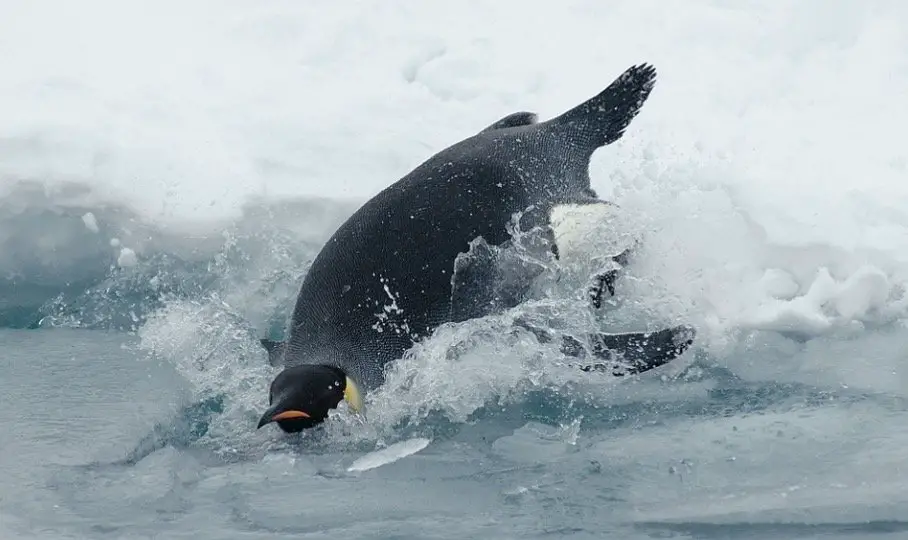
Habitat of Emperor Penguin
The habitats of emperor penguins are located in the Deep South. They live in the Antarctic continent in the compacted ice. The breeding colonies of the birds are around 200 km far away from the ocean and they travel the distance before returning to the ocean for feeding.
Where other penguin species time to time visit the Antarctic Ocean, the emperor penguin lives the whole year in the Southern ocean. The emperor penguins are non-migratory birds.
Now, a total of forty colonies of emperor penguins are known from which only two colonies breed on ice, which is not attached to the mainland.
However, the birds are badly affected by habitat loss due to global warming, which is causing an increase in temperature in these regions as a result the ice packs are melting and also causing the ice to melt earlier in the year.
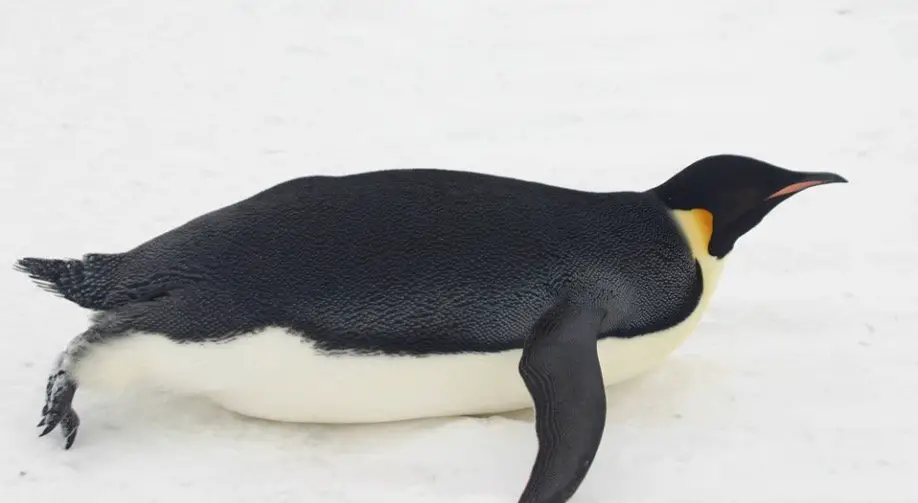
Diet of Emperor Penguin
The emperor penguin is a carnivorous animal. The bird feeds on animals found in ocean water. Most of the diet of emperor penguins is made of krill and fish along with squid and crustaceans.
The tongue of the penguin is rough and spiky like other species of penguin that helps them in eating slippery fish. Until the ice leaves in the summer, the birds remain dependent and was not strong enough to hunt. Thus the parents feed them and collect food for them.
The parents take care of the young in turns and also head out to the sea for hunting. The parents regurgitate a fishy paste and feed it to the stomach of the chick’s mouth.
The birds incubate their eggs during winter months and male penguins eat nothing during this time thus half of their body weight loses at that time.
Predators and Threats of Emperor Penguin
Several large, marine carnivores feed upon Emperor Penguin. The predatory marine animals are the major predators of the emperor penguins. However, the predators vary among different geographical locations.
The enormous Southern Giant Petrel is the major predator of emperor penguins as considered as responsible for more than 30% of deaths in emperor penguins. However, the birds reside in the southernmost parts of the earth but still, they are vulnerable to predation.
The leopard Seals and Killer Whales are eating the penguins and also feed on young penguins when they were learning to swim.
The decreasing amount of pack ice due to global warming is also a threat for emperor penguins. Sometimes, they are also caught in the nets of large fishes accidentally.
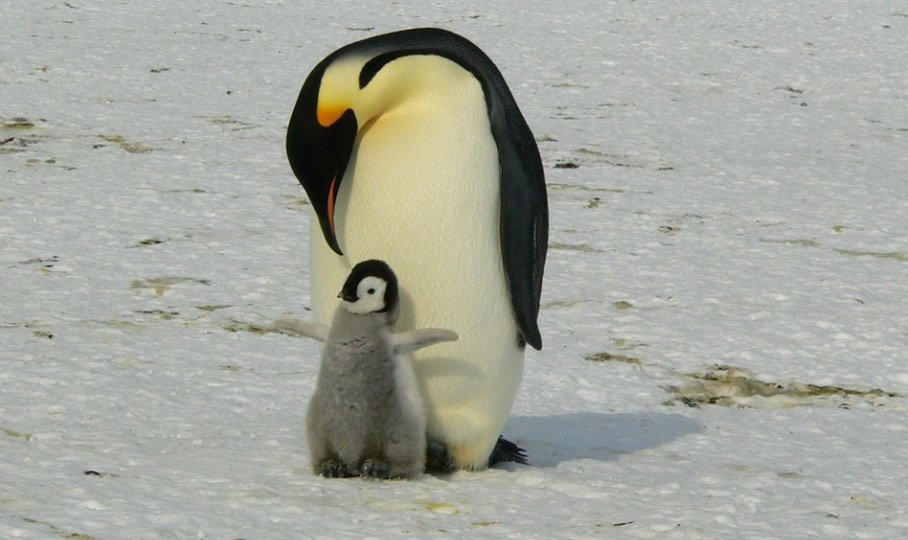
Reproduction, Babies, and Lifespan of Emperor Penguin
While the coldest, darkest, and most difficult months of the year in the Antarctic continent, the emperor penguins prefer to breed. Generally, their breeding ground is located far away from the ocean and they travel for miles to reach their breeding sites during March and April.
After mating, the birds lay a single egg during May and June. The egg is protected by a male penguin and stops the egg on its feet so that it does not touch the frozen ground. The male keeps the egg warm by covering it with a warm brood pouch.
During the winter months, the egg is protected by the male while the female left the egg and leaves for the ocean for foraging food. During the winter season, the temperature can reach -60 degrees centigrade and the speed of wind can be up to 100 mph.
In this harsh condition, the males ensure keep warm all the members of the colony by living together and alternating between the middle and outskirts. The incubation period is about 70 days and with the arrival of spring, the egg hatch.
At that time the female also returns from the ocean and feeds the young, she also uses the brood pouches located on their tummies to keep the young warm and the male goes to forage food. The males also help females in taking care of young after returning.
The growth of young takes place very rapidly and by December, they develop their adult feathers. At that time, the ice melts, and the breeding grounds appear closer to the ocean.
Relationship with Humans
The humans are fascinated by emperor penguins when they travel towards the southern ocean and Antarctic continent and explore the birds at first. It is believed during the 20th century that the birds were evolved from a kind of “missing link”.
However, the theory is now dissolved but still, it is believed that they were evolved from the most primitive bird species. As humans become able to travel in their natural habitat due to improved technology, the birds have been studied properly. In past, people also hunt them for food.
Conservation Status of Emperor Penguin
The IUCN red list of threatened species listed the emperor penguins as Least Concerned species. The birds are not threatened of getting extinct in near future. It is believed that the birds are least vulnerable among all eighteen species of penguins.
The population of emperor penguins is around 200,000 breeding pairs in the Southern Ocean and the population of birds is stable and healthy. Global warming and the increasing level of human activity are also causing a threat to the population of Antarctica.
